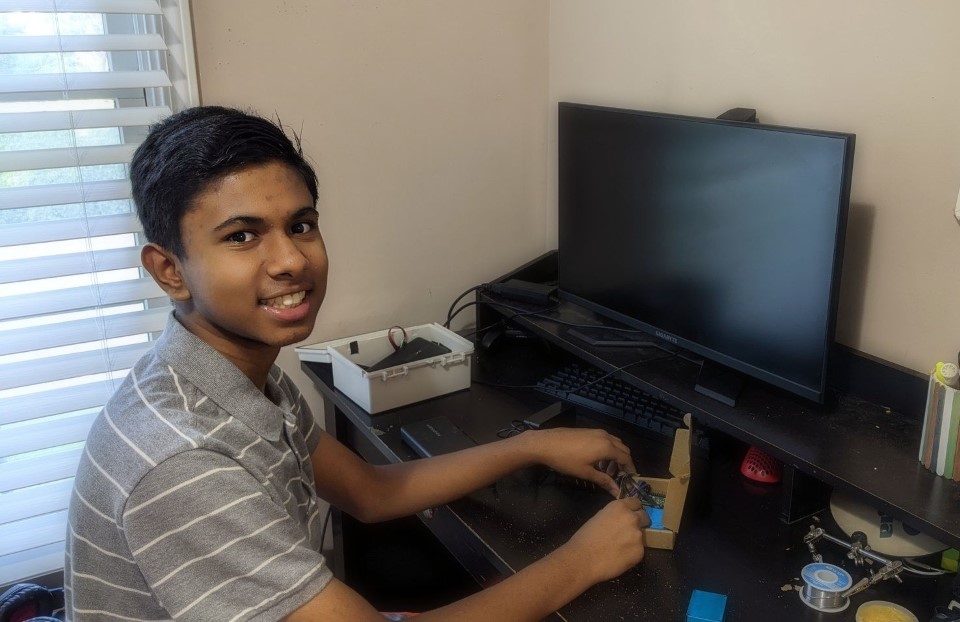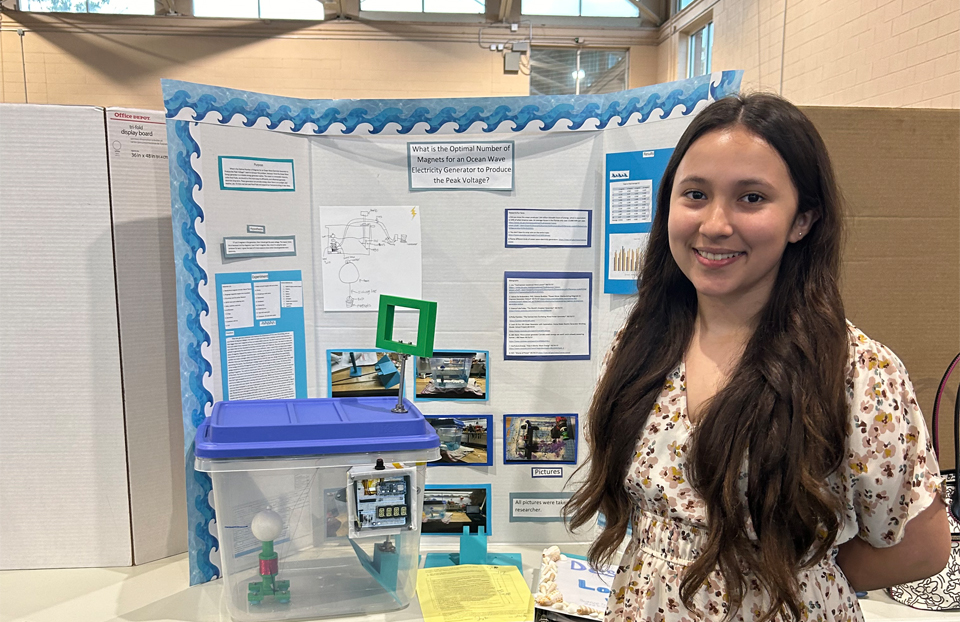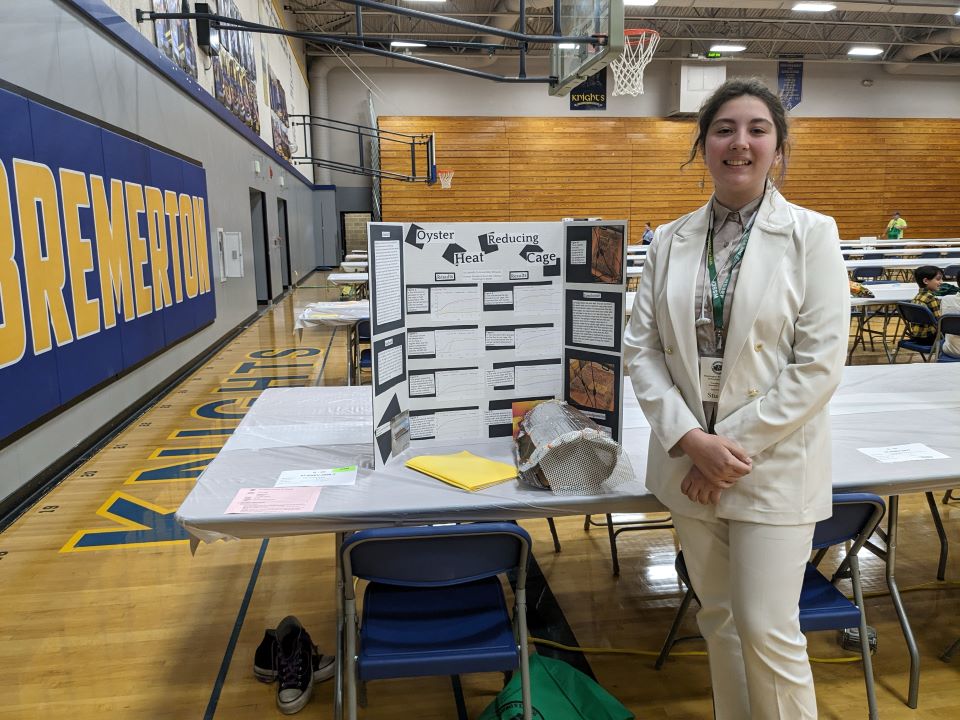Seventh grader receives Lemelson Early Inventor Award for lung-saving system

For the fourth year, The Lemelson Foundation is giving $100 awards to outstanding young inventors in Society Affiliate Fairs with middle school participants around the country. The prize was especially created to reward young inventors whose projects exemplify the ideals of inventive thinking by identifying challenges in their communities and creating solutions that will improve lives.
If you live in the United States, there is a very good chance that you or someone you know suffers from asthma or chronic obstructive pulmonary disease (COPD). As asthma affects about 25 million people and COPD impacts at least 16 million, over 10% of people in the United States live with one of these damaging conditions. This is a scary reality, as COPD alone is the one of the leading causes of death in the United States. What’s even scarier is that those struggling with these conditions are even more at risk now with the threat of the COVID-19 pandemic; they must be even more vigilant in taking health precautions.
This issue hit close to home for Om Guin, a seventh grader at Fulton Science Academy Private School in Alpharetta, Georgia. Seeing several people in his family suffer from asthma and observing them take measures like checking pollen counts before venturing outside sparked a curiosity in Om, which led him to learn more about what causes and aggravates lung diseases.
He found that particulate matter in the air is one of the major causes of these ailments, which both struck a chord within Om and spurred him into action. Particulate matter are small solid particles and liquid droplets in the air that can come from a variety of sources, including swirls of dirt from wind blowing, wood-burning fireplaces or emissions from cars and fossil fuels. “It was very intriguing to me that something invisible and small like particulate matter could be the cause of so much suffering,” said Om. “I wanted to find a way to mitigate these effects before the pollutants in the air trigger suffering in people with lung disease.”
But how could one middle school student approach a goal as monumental as cleaning the air all around us? The answer, surprisingly, was under his own roof. As he was researching the issue, he found that some studies have shown that air quality indoors can be as bad, or even worse, than air quality outdoors. This can be dangerous as people spend so much of their time inside their homes, schools, workplaces and countless other indoor spaces where air might not be as pure as one might assume.
To address this issue, Om set out to build a system which could measure indoor and outdoor air quality, and alert inhabitants to take appropriate actions if the quality was low. These actions could include turning on the fan in the central air conditioner if the building’s air conditioning system uses a high MERV rating filter, or opening the windows when the air outside is of better quality.
His first step in the invention and research process was to find a way to gauge air quality in a chosen location. Using a forced-air, laser-based sensor, he built a pair of devices that measure and record the particulate matter content of the air at frequent intervals. The devices are capable of measuring particulate matter up to 0.3 microns in size. Om then connected a Raspberry Pi Zero to the interface of the sensor to record the measurements and wrote a Python script to turn on the sensor every five minutes and record the data in a file. The two devices communicate with each other over Wi-Fi to exchange sensor data.
The indoor device has an extra speaker to alert inhabitants of actions they can take to improve indoor air quality, such as opening the windows or turning on the air conditioning. The outdoor device is splash-proof and powered by a solar panel, which allows it to keep running continuously over several months.
To test the system, which he calls Lungsaver, Om checked the relative accuracy of the two sensors comparing the readings over several months. With the data collected from the devices, he performed a paired-t-test to establish that the indoor and outdoor measurements had significant differences at a 95% level of confidence.
For his innovation, Om was awarded a Lemelson Early Inventor Prize, which he also received last year for his creation of a voice-enabled smart pillbox. On receiving the award two years in a row, Om reflected: “I was excited to know that even I can be an inventor. Last year’s prize inspired me to continue looking for problems that I can solve. All it takes is a deep look at an everyday problem and some thinking.”


